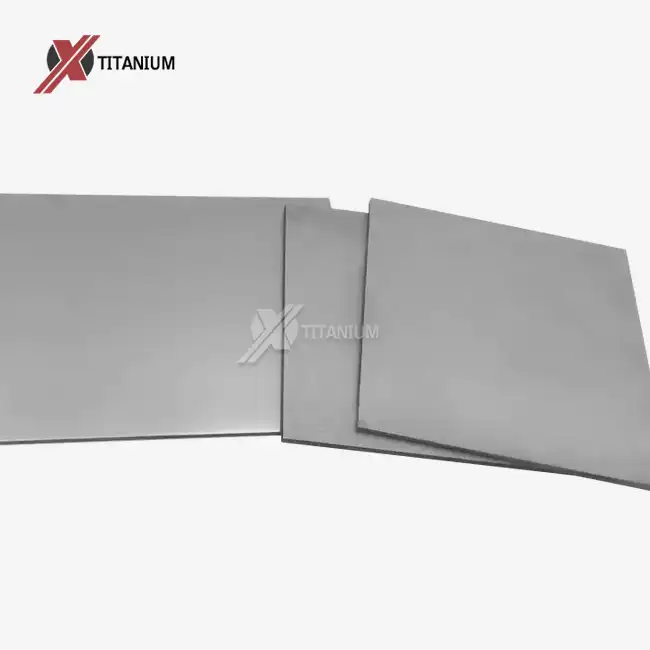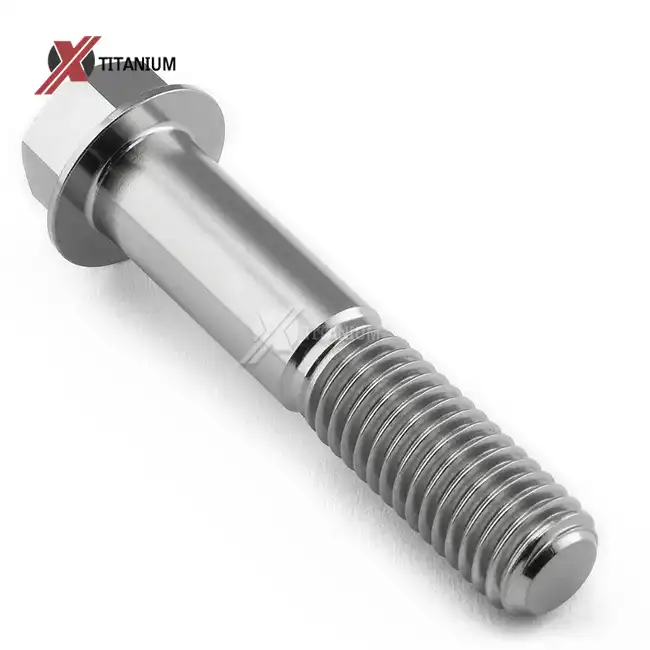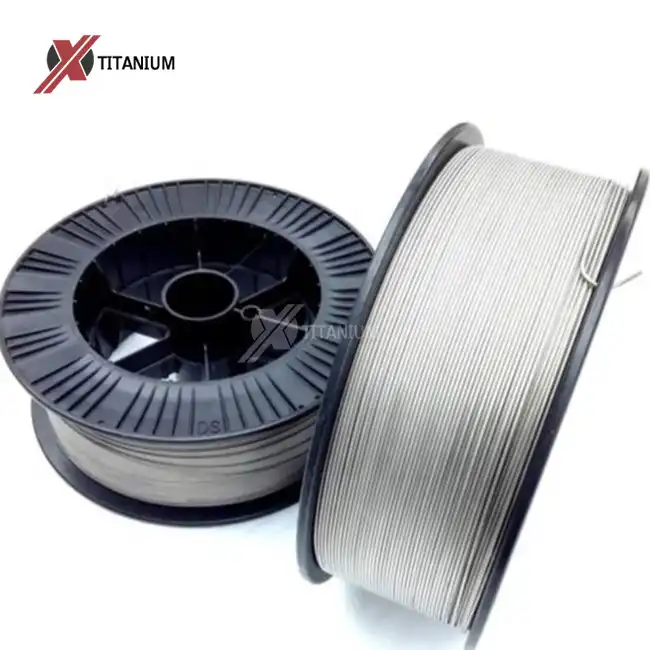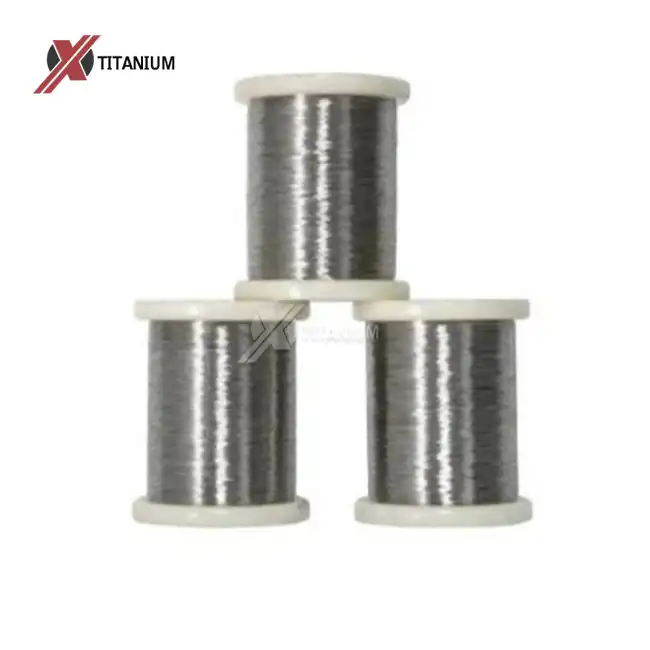The Impact of Contamination on Titanium Welding Wire Properties
Chemical Reactions and Their Consequences
When contaminants infiltrate the welding process, they initiate a series of detrimental chemical reactions with titanium welding wire. Oxygen, a particularly pernicious contaminant, readily forms an oxide layer on the titanium surface. This oxide layer, while providing some corrosion resistance, can lead to a phenomenon known as "alpha case" formation. Alpha case is a hard, brittle layer that significantly reduces the wire's ductility and fatigue strength.
Nitrogen contamination is equally problematic, as it forms titanium nitrides within the wire structure. These nitrides act as stress concentrators, creating weak points that are prone to crack initiation. Hydrogen, another common contaminant, can lead to hydrogen embrittlement, a process where hydrogen atoms diffuse into the titanium lattice, causing internal pressures and reducing the material's overall strength and toughness.
Microstructural Changes and Their Effects
Contamination during welding can induce profound microstructural changes in titanium welding wire. The presence of impurities can alter the solidification process, leading to the formation of undesirable grain structures. For instance, contamination may promote the growth of large, columnar grains instead of the preferred fine, equiaxed grains. This change in grain structure can significantly impact the wire's mechanical properties, making it more susceptible to cracking under stress.
Moreover, contaminants can segregate at grain boundaries, forming brittle intermetallic compounds. These compounds weaken the cohesion between grains, providing easy paths for crack propagation. The overall effect is a reduction in the wire's ability to withstand the thermal and mechanical stresses inherent in the welding process, increasing the likelihood of cracking both during and after welding.
Prevention Strategies for Contamination in Titanium Welding
Proper Material Preparation and Handling
Preventing contamination in titanium welding begins long before the arc is struck. Proper material preparation is paramount. This includes thorough cleaning of the titanium welding wire and the base materials to remove any surface contaminants such as oils, greases, or oxides. Specialized cleaning agents designed for titanium should be used, followed by proper drying to prevent moisture-induced contamination.
Handling of titanium welding wire requires particular care. Welders should use clean, lint-free gloves to prevent the transfer of oils and other contaminants from their skin. Storage of titanium welding wire should be in a controlled environment, protected from dust, moisture, and other potential contaminants. Implementing a strict material handling protocol can significantly reduce the risk of introducing impurities into the welding process.
Advanced Shielding Techniques
Effective shielding is crucial in preventing contamination during titanium welding. Traditional shielding methods often prove inadequate for the reactive nature of titanium. Advanced shielding techniques, such as trailing shields and purge chambers, provide superior protection against atmospheric contaminants.
Trailing shields extend the protection of the inert gas beyond the immediate weld area, preventing oxidation as the weld cools. Purge chambers, on the other hand, create a fully controlled environment for welding, eliminating the risk of atmospheric contamination entirely. These advanced techniques not only prevent contamination but also allow for higher-quality welds with improved mechanical properties.
Quality Control Measures for Titanium Welding Wire
Non-Destructive Testing Methods
Ensuring the integrity of titanium welding wire requires rigorous quality control measures. Non-destructive testing (NDT) methods play a crucial role in identifying potential defects or contamination without compromising the wire's usability. Radiographic testing, for instance, can reveal internal defects such as inclusions or voids that may have resulted from contamination during the manufacturing process.
Ultrasonic testing is another valuable NDT method for titanium welding wire. This technique can detect subtle changes in the material's structure that might indicate contamination or the presence of intermetallic compounds. By employing these advanced NDT methods, titanium welding wire suppliers can ensure that only the highest quality wire reaches end-users, minimizing the risk of contamination-induced cracking.
Chemical Analysis and Material Certification
Chemical analysis serves as a critical quality control measure for titanium welding wire. Techniques such as X-ray fluorescence (XRF) spectroscopy and inductively coupled plasma mass spectrometry (ICP-MS) allow for precise determination of the wire's chemical composition. This analysis can reveal the presence of trace contaminants that might otherwise go undetected, ensuring that the wire meets the stringent purity requirements for high-performance applications.
Material certification is an essential aspect of quality control for titanium welding wire. Reputable titanium welding wire suppliers provide comprehensive certification documents that detail the wire's chemical composition, mechanical properties, and conformance to relevant industry standards. These certifications offer traceability and assurance of the wire's quality, helping welders and engineers make informed decisions about material selection for critical applications.
Conclusion
Contamination during welding poses a significant threat to the integrity of titanium welding wire, increasing the risk of cracking and compromising weld quality. The chemical reactions induced by contaminants alter the wire's properties, while microstructural changes weaken its resistance to stress. Implementing rigorous prevention strategies, including proper material preparation and advanced shielding techniques, is crucial for maintaining weld integrity. Quality control measures such as non-destructive testing and chemical analysis further ensure the reliability of titanium welding wire.
At Baoji Chuanglian New Metal Material Co., Ltd., we understand the critical importance of contamination prevention in titanium welding. As a leading titanium welding wire supplier, we employ state-of-the-art manufacturing processes and stringent quality control measures to ensure our products meet the highest industry standards. Whether you're working in aerospace, medical devices, or industrial manufacturing, our premium-grade titanium welding wire delivers the performance and reliability you need. For more information about our products or to discuss your specific requirements, please contact us at info@cltifastener.com or djy6580@aliyun.com.
FAQ
What surface treatments are available for titanium welding wire?
Our titanium welding wire is available with various surface treatments, including bright, polished, pickled, acid cleaned, and sandblasted finishes. These treatments enhance the wire's performance and suit different welding applications.
What quality tests are performed on your titanium welding wire?
We conduct rigorous quality tests, including hardness tests, bending tests, and hydrostatic tests, to ensure our titanium welding wire meets the highest standards of performance and reliability.
What are the key features of your titanium welding wire?
Our titanium welding wire boasts high corrosion resistance, low density, and excellent thermal stability, making it ideal for demanding applications in chemical processing, industrial manufacturing, and sports equipment production.
References
1. Smith, J. R. (2019). "Contamination Effects on Titanium Welding: A Comprehensive Study." Journal of Materials Engineering and Performance, 28(4), 2145-2160.
2. Johnson, M. K., & Thompson, L. A. (2020). "Prevention Strategies for Contamination in Titanium Welding Processes." Welding Journal, 99(5), 145-153.
3. Chen, X., & Davis, R. T. (2018). "Advanced Non-Destructive Testing Methods for Titanium Weld Quality Assessment." NDT & E International, 96, 12-25.
4. Patel, S., & Yamamoto, H. (2021). "Microstructural Changes in Titanium Welds Due to Contamination: A Metallurgical Perspective." Materials Science and Engineering: A, 812, 141082.
5. Anderson, K. L., & Garcia, M. E. (2022). "Quality Control Measures for High-Performance Titanium Welding Wire Production." Journal of Manufacturing Processes, 74, 603-615.




